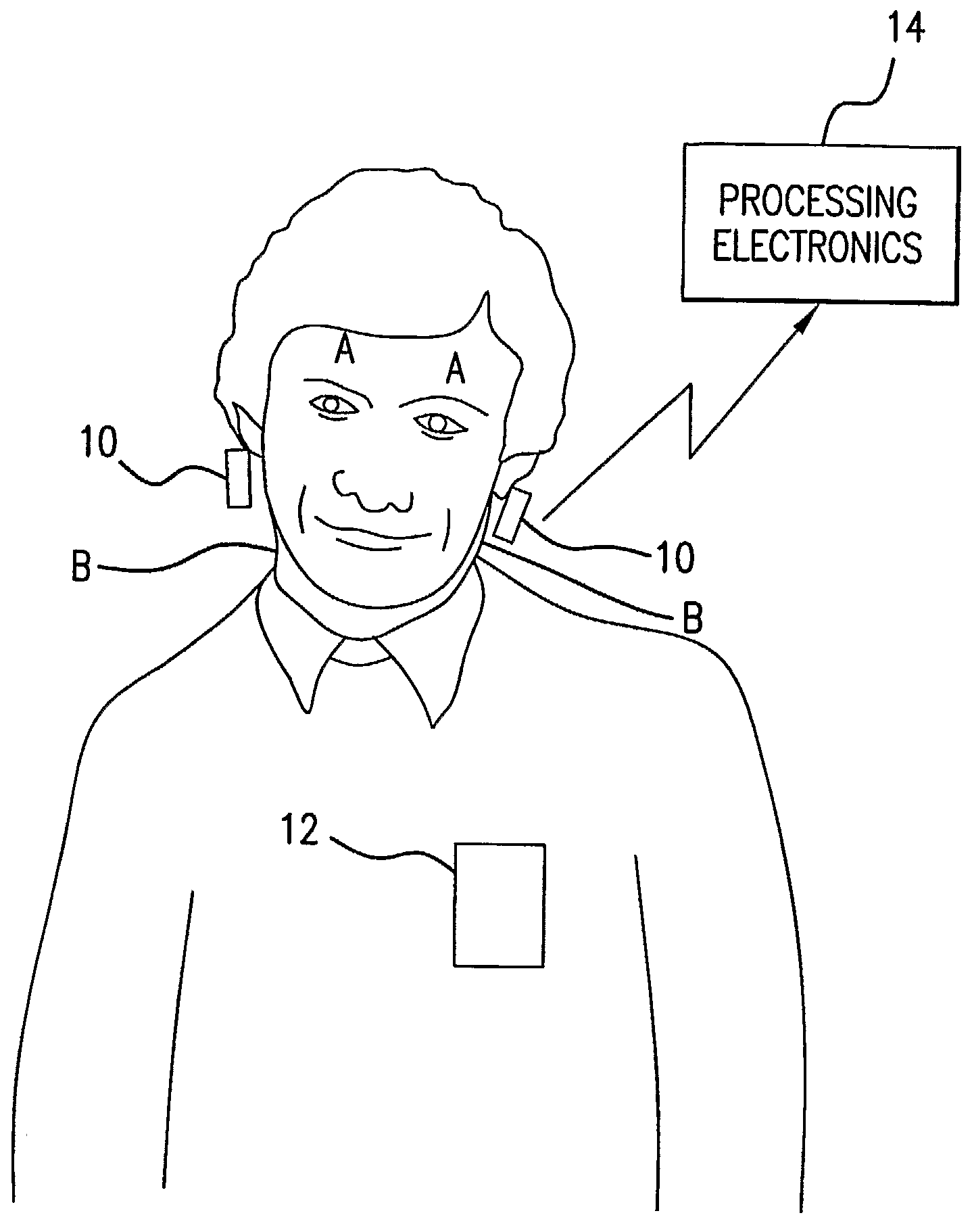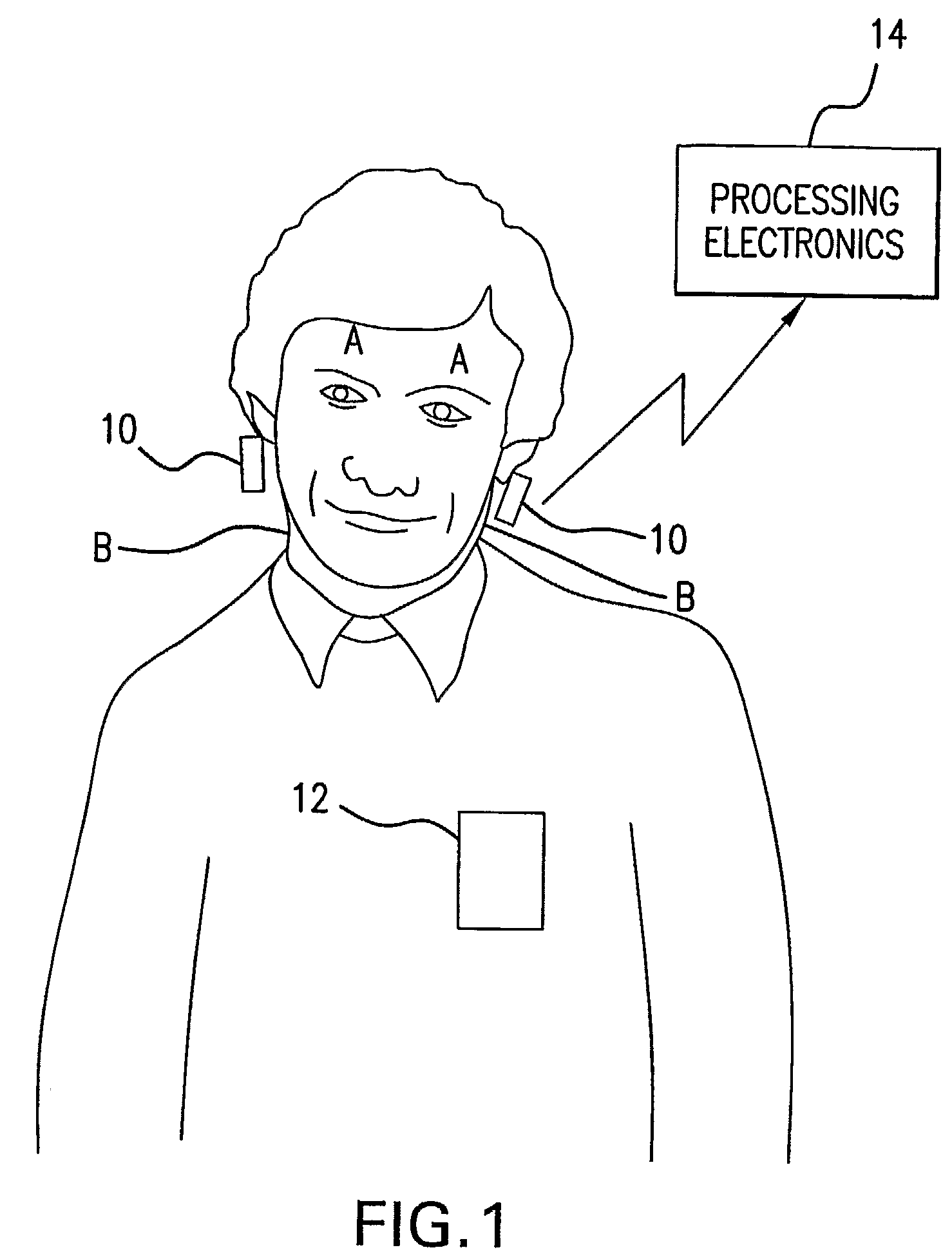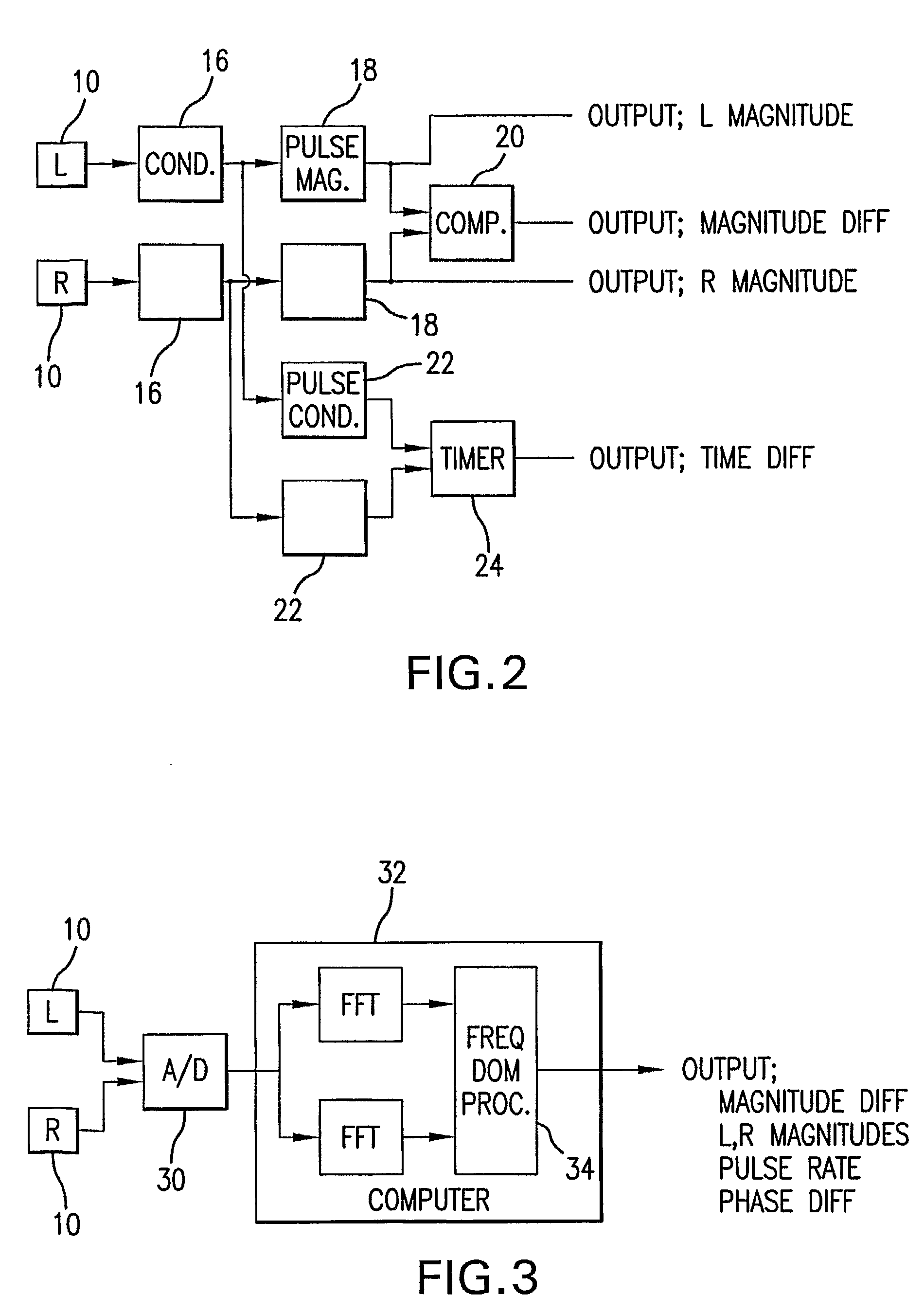Bilateral differential pulse method for measuring brain activity
a pulse method and brain activity technology, applied in the field of brain activity measurement using blood pulse sensors, can solve the problems of poor continuous contact between electrodes, electrical signals are weak, and electrical contact problems are considerabl
- Summary
- Abstract
- Description
- Claims
- Application Information
AI Technical Summary
Benefits of technology
Problems solved by technology
Method used
Image
Examples
Embodiment Construction
[0029]The present invention is based on the fact that measurement of blood flow on the earlobes, neck and forehead directly reflects the blood flow to the brain through the carotid arteries. The carotid arteries and branches thereof feed blood to the face and scalp, including the ears, forehead and jaw. Blood flow to these areas is not constricted differently than to the carotid arteries, and thus a measurement of blood flow at these areas is a measurement of a relative flow of blood to the brain. The simultaneous measurement at two sides of the head gives a measurement of differential functioning of the left and right hemispheres of the brain.
[0030]One embodiment of the method of measuring human brain activity according to the present invention includes the steps of simultaneously measuring pulses at two locations on a human subject that each receives blood from a different carotid artery or branch thereof that feeds a respective one of left and right hemispheres of the brain of th...
PUM
 Login to View More
Login to View More Abstract
Description
Claims
Application Information
 Login to View More
Login to View More - R&D
- Intellectual Property
- Life Sciences
- Materials
- Tech Scout
- Unparalleled Data Quality
- Higher Quality Content
- 60% Fewer Hallucinations
Browse by: Latest US Patents, China's latest patents, Technical Efficacy Thesaurus, Application Domain, Technology Topic, Popular Technical Reports.
© 2025 PatSnap. All rights reserved.Legal|Privacy policy|Modern Slavery Act Transparency Statement|Sitemap|About US| Contact US: help@patsnap.com



